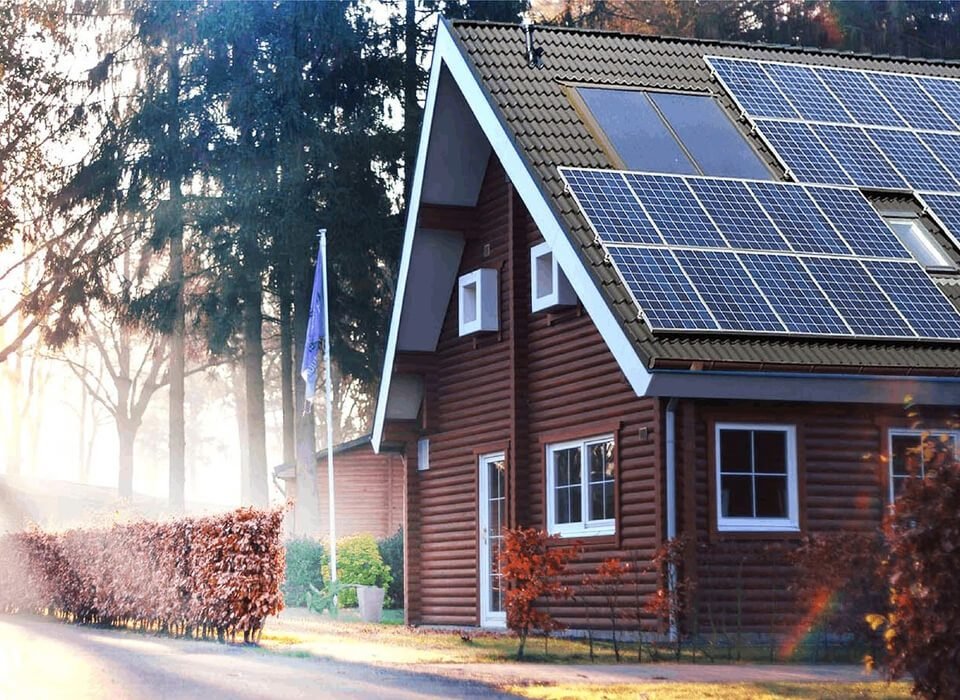Have you decided to join the green energy movement and install solar power in your home, but find that how the system works is a little mystifying? The short explanation is that the solar panel’s cells use the sun’s energy to generate DC (direct current). Most houses need AC (alternating current) to power electrical appliances, so a solar inverter is used to do this. For many years, the string inverter was the only option for converting current for the entire system. Today there are also micro inverters available to do this, so here is a down-and-dirty guide to understanding them.
Table of Contents
What is a Micro Inverter?
Where string inverters optimise for the entire solar panel system, an Enphase micro inverter is installed on each panel and optimises for the panel individually. This allows every solar panel to perform to its full capacity. In other words, string inverters are kind of like the old strands of Christmas tree lights where if one light goes out, the whole set goes out. Micro inverters, like modern Christmas lights, do not allow for one solar panel (or one burnt-out bulb) to degrade the performance of the entire solar array (or light string).
Performance and Efficiency
One of the more difficult aspects of working with solar cells is that a solar panel’s performance is determined by the voltage load applied by the inverter. Maximum power point tracking (MPPT) is a method for determining the optimal voltage. When MPPT is administered to each panel rather than the entire solar system, performance automatically improves. Additionally, Enphase micro inverters are far more reliable than string inverters because of the way they are designed to decentralise power conversion. Using a string inverter, the presence of shade, dirt, snow or even a tiny misalignment in the orientation on just one of the panels will bring the efficiency of the entire system down to the level of the least productive panel. When each panel has its own micro inverter, this setup allows the system to use as much energy as each panel can produce.
How Safe Are Micro Inverters?
Before being fed into a string inverter, solar panels are connected in a series and can have an effective standard rating of anywhere from 300 to 1000 VDC (volts of direct current), which has the potential of being fatal in an emergency. Micro inverters convert energy at the panel level, reducing the need for high-voltage DC connections and cables running through the house. This ensures that both the installers and those who live in the home remain safe.
Flexibility and Ease-of-Use
Micro inverters make it easier to expand your system with more panels in the future if needed. There’s no need to worry about restringing or installing a second inverter. In fact, string inverters come in a limited number of sizes, so if you go that route you may wind up paying for one that is considerably larger than what you require. Additionally, web-based monitoring is possible with micro inverters and can be used to keep track of how much each panel is producing in real-time. Enphase micro inverters can be paired with a networking hub so that you can monitor them with their convenient app.
Finally, micro inverters are generally the more cost-effective and unobtrusive alternative for small homes, townhouses, and flats. They may have a higher initial cost than string inverters, but they make up for it in the long run. Solar installations with micro inverters are less complicated and time-intensive and can save up to 15% on installation expenses. Micro inverters also last substantially longer than string inverters because they are not subjected to the same high power and heat demands. In addition, micro inverters normally come covered by a longer, 10-year warranty. Every circumstance is unique, though, and there are many elements to consider when it comes to the costs. To decide if micro inverters are right for you, divide the costs by energy production to see how much money you’ll have to pay for each kWh your solar system generates.










